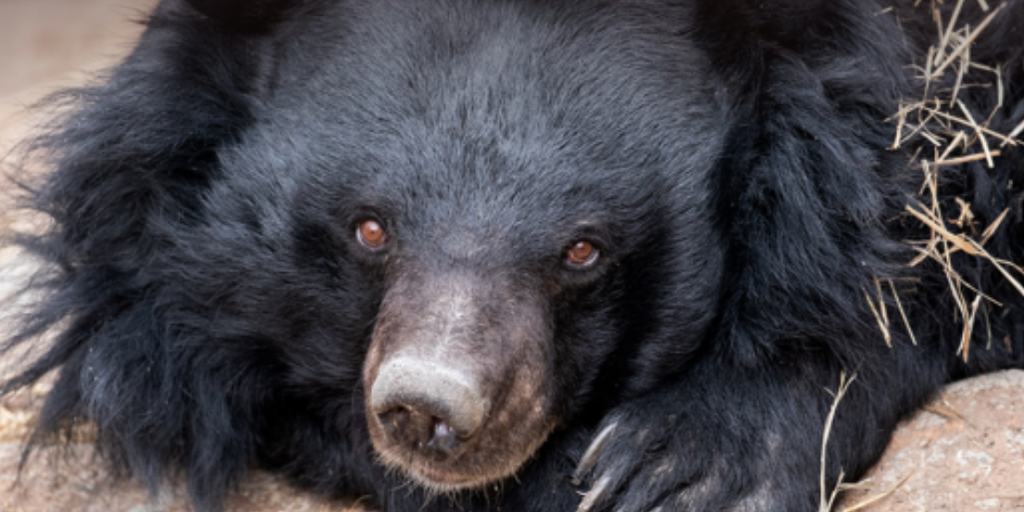In Celebration of Beezler: A Life and Legacy of the Oldest Asiatic Black Bear in Human Care
COLORADO SPRINGS, Colo.—Beyond the ivory gates of the Cheyenne Mountain Zoo, a poignant narrative unfolded as visitors gathered to pay their respects to a beloved resident—a remarkable Asiatic black bear named Beezler, who recently passed away at the age of 32. As the oldest of her kind in human care across the United States, Beezler’s life offers profound insights into the complexities of wildlife conservation, human-animal relationships, and the very essence of aging.
A Life Less Ordinary
Beezler’s story began decades ago, as she was born in an era when exotic animals were more commonly featured attractions in zoos. Yet, she defied the odds, living three years beyond the average life expectancy of her species in human care, which is around 29 years, according to the Association of Zoos and Aquariums. Her longevity spoke volumes about advances in zoological medicine and animal care.
A Day of Farewell
On her Last Best Day, zoo officials arranged a gentle farewell, giving Beezler the chance to bask in the sun while enjoying a unique assortment of treats—meatballs, muffins, and cookies, all part of the deliberate effort to honor her spirit. “We wanted her to have that perfect day where she felt celebrated,” said Jessi Palmer, a longtime animal keeper at the zoo. “She was not just a bear; she was family.”
This day encapsulated the deep emotional bonds the staff had formed with Beezler, underlining the zoo’s commitment to animal welfare. “Animal interactions often transcend the barriers we set for ourselves,” noted Dr. Sarah Donnelly, an animal behaviorist. “In their presence, we can explore our own humanity.”
The Age of Wisdom
A conversant observer, Beezler captivated visitors with her lively antics, often leaving them in awe of her vibrancy. “It’s as if she didn’t believe she was aging,” remarked one frequent visitor, echoing a sentiment shared by many. “She was old, but she never acted it.”
Such observations align with recent studies indicating that age perception varies significantly among species. Research published in the Journal of Zoos and Wildlife Medicine suggests that the interaction between an animal’s environment and its biological makeup can influence both its health and longevity. Understanding this intricate relationship becomes essential in shaping the future of conservation efforts.
- Behavioral engagement: Active engagement in naturalistic play can prolong an animal’s life.
- Environmental enrichment: Customized habitat features support mental stimulation and health.
- Diet and nutrition: Carefully managed diets significantly affect longevity prospects.
Contributions to Conservation
Beezler’s existence not only brought joy but also played a pivotal role in educating the public about the species’ plight. Asiatic black bears face significant threats in the wild, ranging from habitat loss to illegal poaching. In this context, Beezler’s life served as a living example of what can be achieved through dedicated conservation efforts.
“We aim to inspire people to think about the fate of all bears across the globe,” CMZoo President and CEO Bob Chastain remarked. “Beezler embodied the spirit of resilience, and we hope her legacy will inspire future generations to advocate for wildlife conservation.”
The Circle of Life
Reflecting on Beezler’s legacy, Chastain highlighted another poignant detail: the passage brought on by her sister, Honey, who succumbed to her ailments just a year prior. “It’s heartbreaking to lose them, but we carry their memory forward. Each death reminds us to focus on improvement and advocacy.”
As Beezler’s family at the zoo grieved, they also celebrated a life well-lived—a reminder that, in the tapestry of life, every thread matters. From children learning about bears during school trips to researchers studying animal behavior, she touched thousands of lives over her extraordinary journey.
With Beezler’s passing, a robust dialogue emerges around the roles zoos play in conservation. Modern zoos, often seen as outdated attractions, are evolving into bastions of wildlife education and preservation. They play an essential role in species recovery programs, contributing to the survival of threatened species through controlled breeding and reintroduction initiatives.
As the sun set over Cheyenne Mountain, the legacy of Beezler lingered in the cool evening air. There, in the hearts of her keepers and the minds of her visitors, her spirit thrives—pushing humanity towards the future, where coexistence with nature becomes not a choice but a responsibility.









